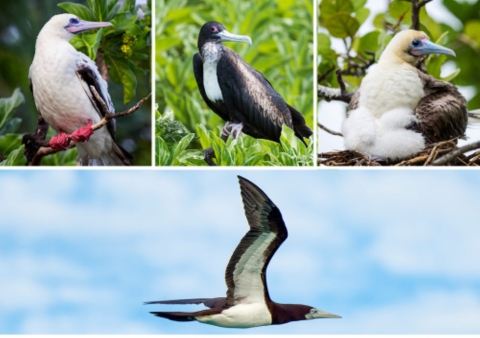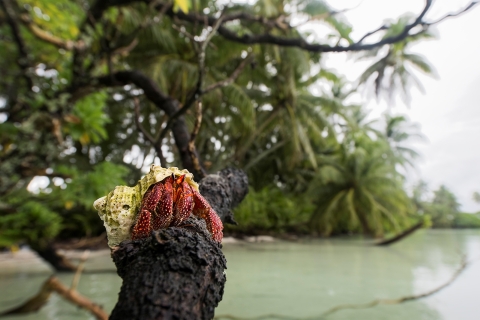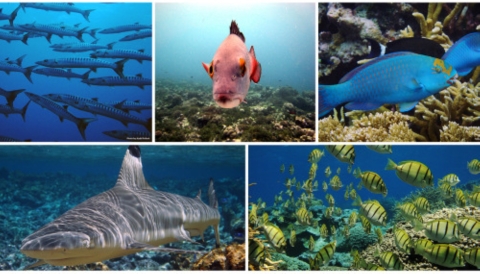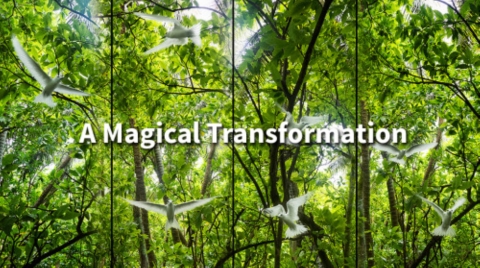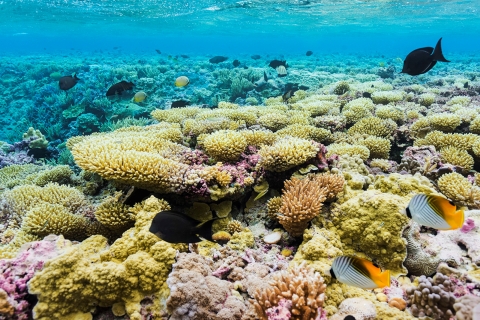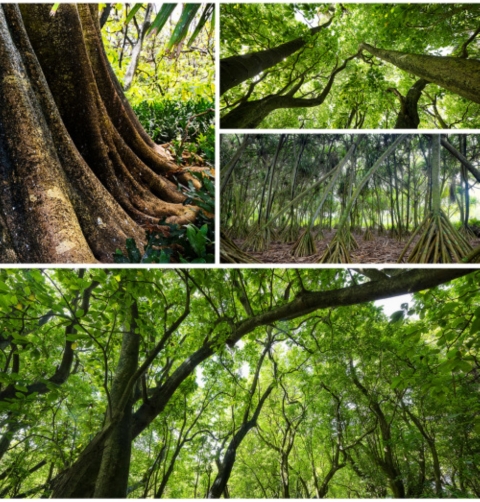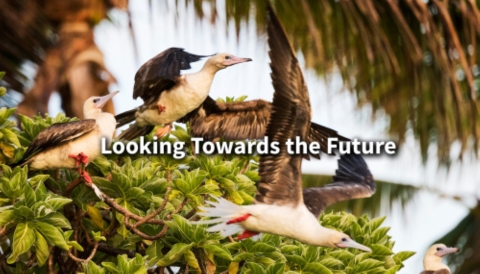This year is the 50th anniversary of the Endangered Species Act, a law that has been a powerful catalyst for conservation of America’s most treasured fish, wildlife, plants and their habitats. In the Pacific Region, our Tribes, state and federal agencies, and partners have joined with our dedicated staff to be the driving force behind the successes we share and the strength ensuring we can address the challenges ahead. Celebrate this milestone with us in this collection of stories as we reflect on past successes, assess current challenges, and envision an equally bright future for the next 50 years and beyond.
With its lush rainforest and deep turquoise waters surrounded by some of the most intact coral reef ecosystems in the world, Palmyra Atoll National Wildlife Refuge seems like a perfect island paradise, but it wasn’t always so perfect.
In 2011, the tiny atoll 1,000 miles from Hawaii was overrun with more than 30,000 rats - invasive predators that were introduced when Palmyra was a World War II military outpost.
Over the decades the rat population on Palmyra had exploded across the land, wreaking havoc on the native sea bird population and creating disturbances throughout the island ecosystem.
Introduced predators like rats can put extreme pressure on an ecosystem, causing disruptions to the natural system and even leading to species extinction. The invasive rats on Palmyra ate the eggs and chicks of both ground and tree-nesting birds, particularly sooty and white terns. The rats also ate native seeds, seedlings and plants, and competed with all seven species of land crabs known to live there.
“The sooty terns would be under attack from rats and you could see the perimeter of the colony literally get eaten away,” said Amanda Pollock, refuge manager at Palmyra Atoll during the removal project.
Everything on Palmyra suffered because the rats were throwing the entire terrestrial world of Palmyra out of balance. So in June 2011, the U.S. Fish and Wildlife Service, The Nature Conservancy, and Island Conservation took on the task of removing rats from the ecosystem.
“We knew it was going to be hard, but if we stuck to the plan we had the best chance of success. Anything less than success was not an option,” said Pollack
The Palmyra rat removal project was the result of careful planning and research to ensure that native species were not harmed, and it was the first step in a longer-term effort to restore the atoll’s ecological balance.
“This was something we needed to do to allow the ecosystem to return to normal,” said Pollock.
For those who were a part of the removal, the changes were visible and immediate. Pollock said that before the removal you could see impacts from the rats everywhere – rats were always visible on and in trees and there were chewed seeds and seedlings all over.
“We think that a lot of the really rare plants were kept rare because the rats ate them all,” said Stefan Kropidlowski, refuge manager for Palmyra Atoll National Wildlife Refuge.
"After the removal it was magical," said Pollock. “I remember hearing crickets at Palmyra for the first time. There were swarms of dragonflies. I saw land snails that I had never seen before because the rats had kept them in extremely low numbers. And seedlings of some native trees that I had never seen before.”
“If you’re just zooming by in an airplane, you’re not going to notice an immediate difference,” said Kropidlowski. “But the big differences for Palmyra will be in the future. We believe removing all the rats will increase the density and diversity of plant and animals at Palmyra in the long term, and thereby the resilience of the atoll.”
In 2016, scientists from Island Conservation returned to Palmyra to determine what changes occurred since the rats were removed from the atoll five years ago. The data they collected will help us better understand how island ecosystems can recover when invasive predators are removed.
“After a week of monitoring many of the plants and animals dwelling on this beautiful paradise, some changes are immediately apparent. Seedlings of particular tree species have appeared where there once were none, and new land crab species are being recorded,” said Coral Wolf, Conservation Biologist at Island Conservation.
The data they collect will help us understand how to help a damaged ecosystem recover. The lessons learned on Palmyra Atoll are all a part of the continuing evolution of the science of conserving and protecting these rare and incredible ecosystems.
For more images of Palmyra Atoll visit https://goo.gl/CnWoYd
###
The U.S. Fish and Wildlife Service works with others to conserve, protect, and enhance fish, wildlife, plants, and their habitats for the continuing benefit of the American people. For more information, visit www.fws.gov/pacificislands, or connect with us through any of these social media channels at https://www.facebook.com/PacificIslandsFWS, www.flickr.com/photos/usfwspacific/, https://medium.com/usfwspacificislands or www.twitter.com/USFWSPacific.



